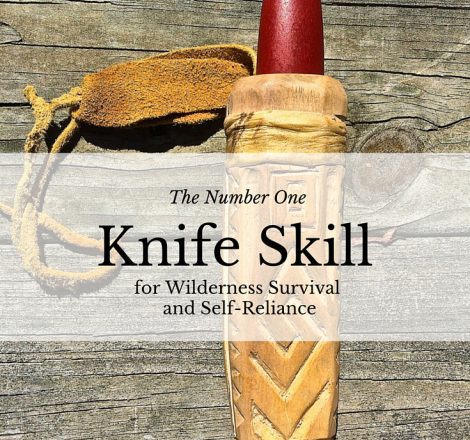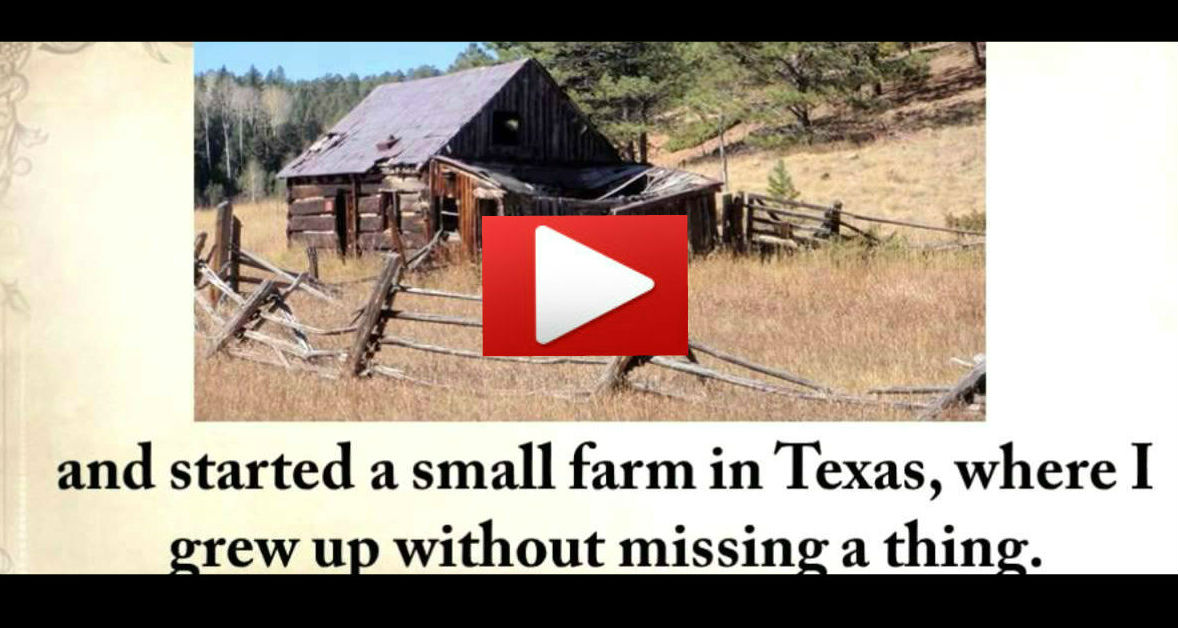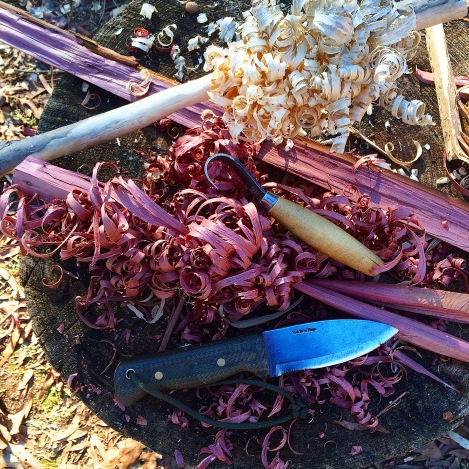Humans have employed six simple machines throughout history to reduce the amount of work required for tasks. Of these six, my favorite for outdoor self-reliance is the sexy and sleek wedge!
Huh!?
Sleek and Sexy? A wedge sounds rather dull and useless.
Hold on a second. You may change your mind about the humble wedge.
A wedge is an incline plane sharp enough to cut and separate stuff. Stuff like wood, meat, and even metal need to be divided into smaller parts in a civilized manner. No need to gnaw your steak like a caveman.
You see, like all our cutting tools, a knife is a wedge. Hence my love affair with this simple machine!
“I learned how much of what we think to be necessary is superfluous; I learned how few things are essential, and how essential those things really are.” ~ Bernard Ferguson
It’s not just the aesthetics of forged metal that attracts my attention. The wedge may be the most useful tool a person can carry in a pocket or on a belt.
Why?
Knives are designed to do more than spread peanut butter! In skilled hands, stuff can be made. Important survival stuff. Developing knife skills is the best way to replace all those shiny-object-survival kit items. Safely wielding a sharp wedge has always been a top priority for woodsmen and woods-women throughout history.
Survival vs. Self-Reliance
Somewhere along our collective outdoor journey, survival took on the connotation of simply staying alive. I personally don’t get too caught up in the latest terminology… Woodcraft vs. Bushcraft, Survival vs. Self-Reliance, etc., etc. All I know is that spending time in the woods is my passion.
Survival is part of self-reliance. A big part. You can’t develop outdoor self-reliance skills if you’re dead.
Look up a few old “Survival” writers in the 60’s. Survival was much different from how we view it today. These early survivalists taught us more than just making it through a 72 hour scenario. Survival was wilderness living skills back then.
Dial back to the golden age of camping and woodcraft and you’ll find that the knives of Nessmuk, Kephart, Seton, and Miller played an essential role in all their tramping and wilderness adventures. This simple machine (wedge) was a value-adding tool for, not only survival, but for camp comforts and wilderness living skills.
Before addressing skill, let’s begin with safety…
Knife Safety
A sharp knife is a safe knife. Dull knifes take more force for cutting and increase the risk of injury. You want your knife shaving sharp.
Below are a few tips for basic knife safety for outdoor self-reliance…
- Cut in a direction away from your body. That’s good advice for beginners and seasoned woodsman. However, there are safe methods to cut wood towards your body when carving spoons that can transfer to outdoor self-reliance skills. Experience and band aids will teach more than reading.
- Work with your knife outside the triangle of death (an imaginary triangle between your knees and crotch).
- Work within the blood circle when others are nearby (a circle made with your outstretched arms as you turn 360 degrees).
- Grip and body mechanics ~ standard grip, reverse grip, chest lever, knee lever, and thumb assisted grip for push cuts in fine carving tasks. (These will be covered in detail in a later post.)
#1 Knife Skill ~ Fire
No matter the season or environment, a solid belt knife rides on my hip. If I’m ever separated from my main pack, my knife is on my body. In this case, it is now my one tool option. A good fixed blade knife is your number one tool in a wilderness setting.
Why such a bold statement?
One word… Fire!
Fire covers a multitude of survival sins. That sharp, metal wedge attached to your hip may be your only hope for fire. Campfires are certainly mesmerizing. We build them for much more than to simply stare into the flickering flames. Fire is your best sleep aid. And sleep is the most overlooked skill in outdoor self-reliance.
“The quality of a survival kit is determined by how much it can help you when you need to sleep. If you can sleep well at night, you have it made.” ~ Mors Kochanski
Which is more important, knife or ax? I totally agree with Mr. Kephart’s statement below.
The thought that a heavy hunting knife can do the work of a hatchet is a delusion. ~ Horace Kephart
However, stuff happens! Situations can relieve you of a fine ax. In that case, you’d be wise to have a knife able to process enough tinder and kindling for fire. In my woodlands, an abundance of small kindling material is available without ever removing my knife from its sheath. However, when it comes to tinder material, a knife really speeds the process.
Processing Wood
Feather sticks are all the rage in bushcraft and an excellent skill to practice. Pretty little curls bunched up on the end of a stick are created by controlled wood removal. Surface area created from these fine curls is what makes them burn so easily.
I found a down-n-dirt way to make feather sticks over at Toms Backwoods channel using a spoon knife pictured above. If you have a spoon knife in your kit, use it to process tinder/kindling if you need to do so in a hurry. Here’s a quick video demonstration of the process…
Feather sticks are pretty and all, but my favorite way to make tinder material is using the dull side (spine) of my knife instead of the cutting edge. This technique takes less skill than feather sticks but is a super quick and easy way to produce wood shavings for tinder. Scrape the outer bark of a cedar tree in the same manner to produce a bundle of fine and coarse tinder material. Georgia fat lighter is my all-time favorite, though…
Ax-less, a solid knife can process firewood using the baton method. The baton technique is frowned upon by many in the outdoor community. But as mentioned previously, beating a knife through a piece of wood is my Plan B if I don’t have a proper wood processing wedge (ax). A full-tang knife with a 4 to 5 inch blade should be robust enough to produce tinder, kindling (smalls), and fuel size wood from a single wooden round.
A funny note on smalls: A fellow bushcrafter from across the pond wrote me confused over the term “smalls”. In his part of the world, “smalls” referred to skivvies. I’m not advocating the burning of your underwear. Smalls are pencil lead to pencil size sticks (kindling) used in fire craft from where I come from. 🙂
Knife and Spark Ignition
The steel in your main carry knife is another fire resource. That is, if you carry a high carbon steel blade. The thought of striking the spine of your expensive wedge with a sharp piece of rock to produce sparks is an abomination to knife junkies. However, knowing that your blade can serve as a backup flint and steel ignition source may one day give you fire if that’s all you have available.
I’ve written a few times about using my favorite spark ignition source, flint and steel, here and here. While ferro rods create hotter sparks, they are consumable. A fire steel should last you a lifetime and then be passed down for the next generation to enjoy… like a good knife.
Remember, fire is life out there. How much is your life worth? I’d say way more than an expensive cutting tool!
To further you fire craft skills, I’ve got an entire page dedicated to this outdoor self-reliance skill. Your wedge (knife) is an essential tool for creating fire.
More knife skill articles are on the way. Stay sharp, my friends!
Keep Doing the Stuff of Self-Reliance,
Todd
If you find value in our blog, Dirt Road Girl and I would appreciate your vote on Top Prepper Sites! You can vote daily by clicking here or on the image below. Check out all the other value-adding sites while you’re there… 
Thanks for Sharing the Stuff!
Copyright: Content on this site (unless the work of a third-party) may be shared freely in digital form, in part or whole, for non-commercial use with a link back to this site crediting the author. All links in articles must remain intact as originally posted in order to be republished. If you are interested a third-party article, please contact the author directly for republishing information.






Great site! Thanks…….will visit often.